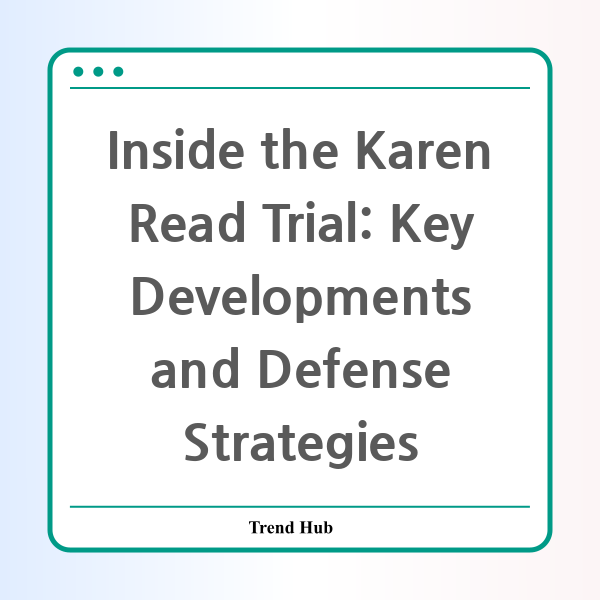* This website participates in the Amazon Affiliate Program and earns from qualifying purchases.

As the Karen Read murder trial unfolds, many are captivated by the intense legal drama and the various twists and turns the case has taken. This trial has brought to light crucial issues related to police investigation methods, expert witness reliability, and the nuances of establishing reasonable doubt in a murder case. With the defense continuously challenging the prosecution's claims, let’s break down the latest developments in this high-profile legal battle.
One of the most significant confrontations occurred during day 23 of the trial, when defense attorney Robert Alessi scrutinized Dr. Judson Welcher, the accident reconstruction expert. Dr. Welcher testified that injuries sustained by John O'Keefe were consistent with being struck by Karen Read’s Lexus SUV. However, Alessi's aggressive cross-examination aimed to undermine the credibility of Dr. Welcher's findings by questioning his knowledge about how O'Keefe’s injuries were incurred. Alessi highlighted discrepancies in the expert's report, notably changes made mere days before his testimony.
Judge Beverly Cannone played a pivotal role in this segment of the trial, denying requests from the defense to explore testimony from a previous state trooper and details from the autopsy conducted by Dr. Irini Scordi-Bello. In her prior testimony, Dr. Scordi-Bello noted that O'Keefe’s head injury was incompatible with a car accident but did not definitively rule on the manner of death. This uncertainty could play a vital role as the defense seeks to create reasonable doubt regarding their client's actions.
Moreover, the defense has raised alarms about the investigation’s integrity, claiming police incompetence led to crucial missteps. Reports indicated that evidence was mishandled—blood samples collected in makeshift containers and delayed report writing, among other issues. The defense contends that such irregularities cast doubt on the prosecution’s case, arguing that a conviction should not stem from an investigation riddled with complications. As one legal expert pointed out, a sloppy investigation raises enough questions to potentially sway jurors in favor of the accused.
During the trial’s early sessions, observations were made regarding the methods used by police officers to gather evidence at the scene where O'Keefe was found. One key piece of evidence involved a retired officer using a leaf blower to remove snow from the area, followed by collecting samples without proper documentation—a method criticized for lacking best practices. Such mismanagement of evidence could certainly impact the jury's confidence in the prosecution's narrative.
As the trial progresses, Karen Read’s legal team continues to employ common defense tactics, focusing on the potential failings of police procedures. This approach proved effective in her earlier trial, which resulted in a hung jury—a sign that the jury found the evidence insufficient for a conviction. The defense’s strategy hinges on debunking the prosecution’s claims and illustrating the reasonable doubt present in the case.
The spotlight on this trial not only encapsulates the challenges faced by the defense but also raises broader questions about the integrity of police investigations in high-stakes cases. As jurors contemplate the credibility of the evidence presented, the trial serves as a critical lens through which the judicial system's handling of evidence—and the implications of those methods—can be scrutinized.
In summary, as we await further developments in the Karen Read trial, the key takeaways remain clear: the prosecution's case faces serious challenges amid questions of evidence collection, expert testimony reliability, and the overarching theme of reasonable doubt—elements that could very well determine the verdict in this intense courtroom drama.
* This website participates in the Amazon Affiliate Program and earns from qualifying purchases.